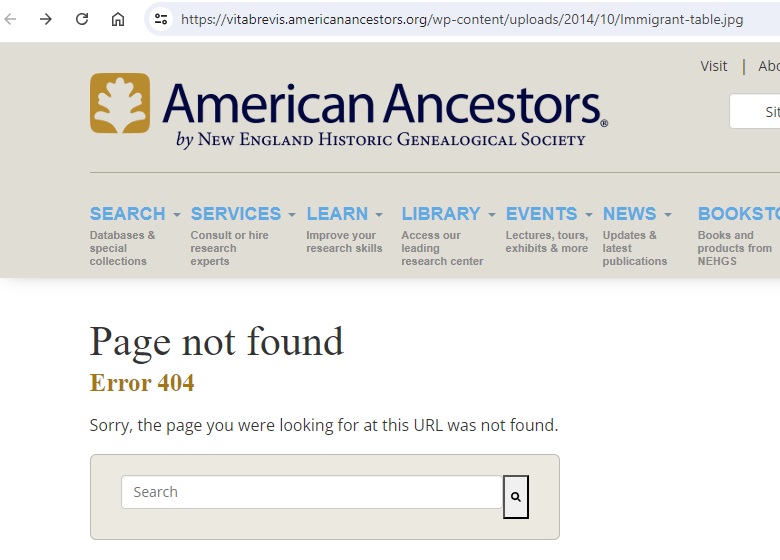TL;DR -- Looked at the data related to Rachel (Gardner) Noble and considered how she might relate to Thomas Gardner. More questions than answers.
---
This post will pull together some posts from the past, beginning real early. We were asked if Thomas has a sister, Rachel. Had not hear that, at the time, so went looking. There was no real resolution, however lots of material was covered which is scattered through these posts. There was a recent notice received that there was research backing this up. So, we have to follow that hint like fish after bait.
Now, we are in the process of updating Thomas' Profile on WikiTree. The idea now is to make it a solid piece which references proper sources, starting with Anderson's work (Great Migration Project). Then, we will add in research details, some of which was contributed by Gardner Research. However, with respect to Rachel, do we know any more than about Margaret's proposed brother, Thomas Friar, who came over to Gloucester?
It has been a couple hundred of years since the Revolution and of Americans wandering the world. Someone came back with a tip that Sherborn records mention Thomas and Margaret. Felt heard this and printed the tip (without source - by the time he heard it, how many mouths would it have gone through?). We used that as a clue. Too, old man Folger was noted for telling people that John Gardner had said that his father told him that they were from Sherborn. We like their coffee and took that as a clue.
Well, we will be doing this in a more formal manner to meet NEHGR requirements. That'll take time. In the meantime, stay tuned. So, back to Rachel. There are only three bullets here. The last one is to a search that has all of the posts that mention Rachel. This is an example of hoping that looking at some related pedigrees might help with another. It can work. Usually? Probably not. But, the attempt needs to be documented.
LDS and Thomas Noble -- Gosh, all of those Thomases. We first ran into this while looking at the Rachel issue and thought that it ought to be brought forward. It is interesting since it has persisted, pay and get some bit of information, and on a quick look the stuff is appealing. That Thomas Nobel had Rachel Gardner as a wife is known; who she is is not; nor, is he known as well as some proclaim, evidently. You see the issues. Truth engineering, folks, with our 'portal to truth' as an offering as a stable source of good information. Now, in this case, the person paid to find out that stuff on family search (et al) may be bogus. Too, the notion is that someone needs to search actual records (assuming that they can get hold of them). We're fortunate that Sherborn did digitize some records.
Just Answer
from the Presidio of
San Francisco- Rachel (Nobel) Gardner -- This is from five years ago when we were trying to pull together some loose strings. After all, we had seen the marriage of Thomas Gardner and Margaret Friar. Too, we saw the boys being born in the right order with years agreeing. Then, that family disappeared from Sherborn records. But, more records are available now. We have lots of people interested. And, some are on the ground in the UK, so that might help.
- Search on 'Rachel' -- When scrolling through this list, look for a yellow box. In there, we tried to follow a suggested ancestry for Thomas, as proposed by the Noble family. At the time, we didn't get far. But, then, we are not saying no either. Case in point is George Gardiner of Rhode Island. They published their book before Dr. Frank did his. Too, they have published books about their meetings over the years. Yet, on WikiTree, there is controversy where the notion is to set his Profile up similar to Thomas' where it's clear about sources and what's still in the air.
This is one of many avenues of research that are on-going. Based upon our experience, we like the WikiTree approach and the genealogical views being upheld there.
Too, for those who wonder about technology. WikiTree is a 'wiki' thing where one can edit the code or by menu. They have brought in more menu support, but the code view is still there. Too, they have standards. A method, named G2G (genealogist to genealogist), can be used for coordinating work where comments/updates keep everyone abreast of status. We have some G2Gs related to our WikiTree work. Some like menus; some like code; there are other ways (say, AI); however, common standards can apply but require definition and monitoring. What we have is more stuff stacked on the back of people doing thankless work (thank the Registrar of whatever group you might belong to for their service).
Gosh, think back to before the camera and the copier and, even, the mimeo machine. Looking at the handwritten notes from 100+ years ago makes one marvel that some progress did occur.
Remarks: Modified: 02/24/2021







